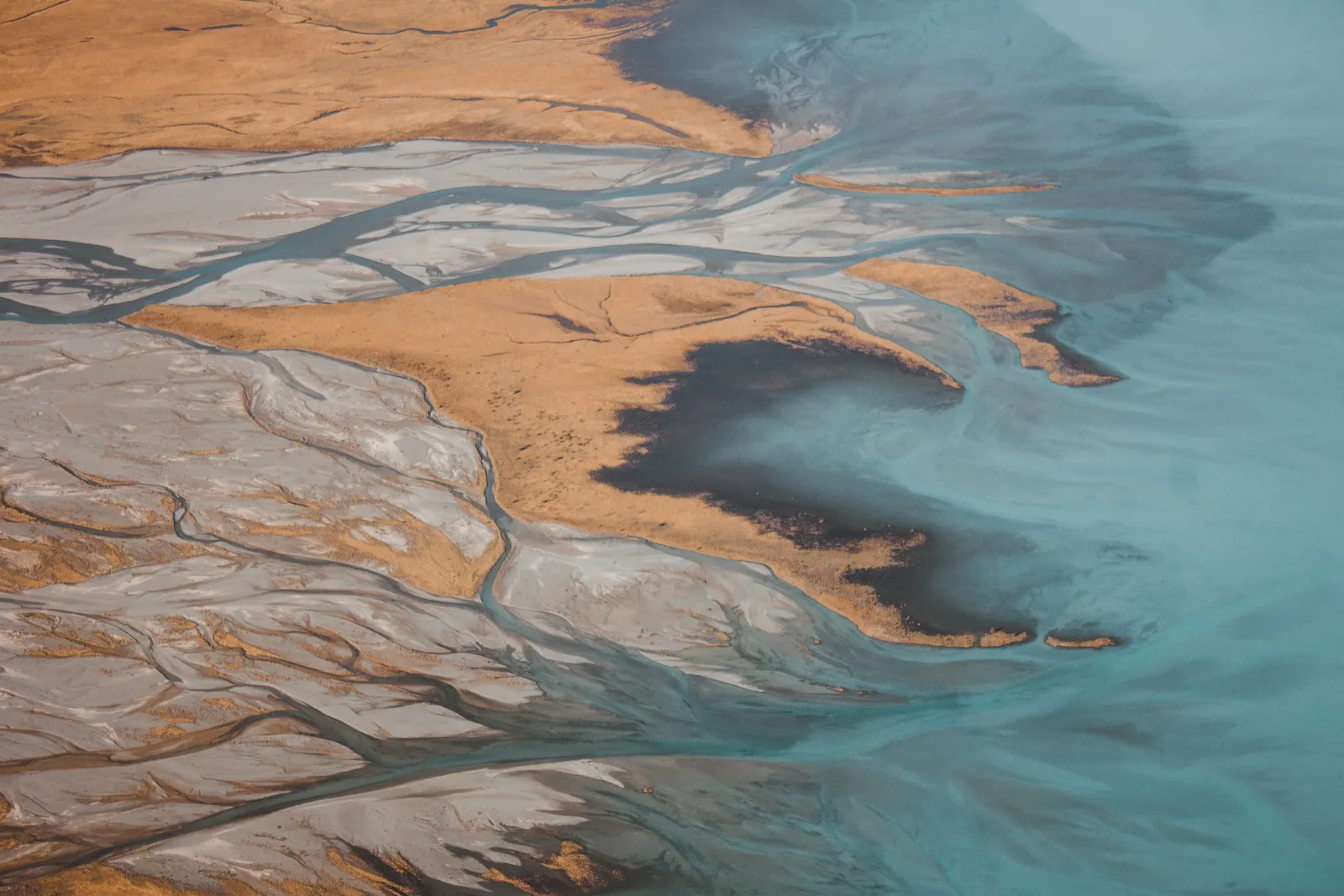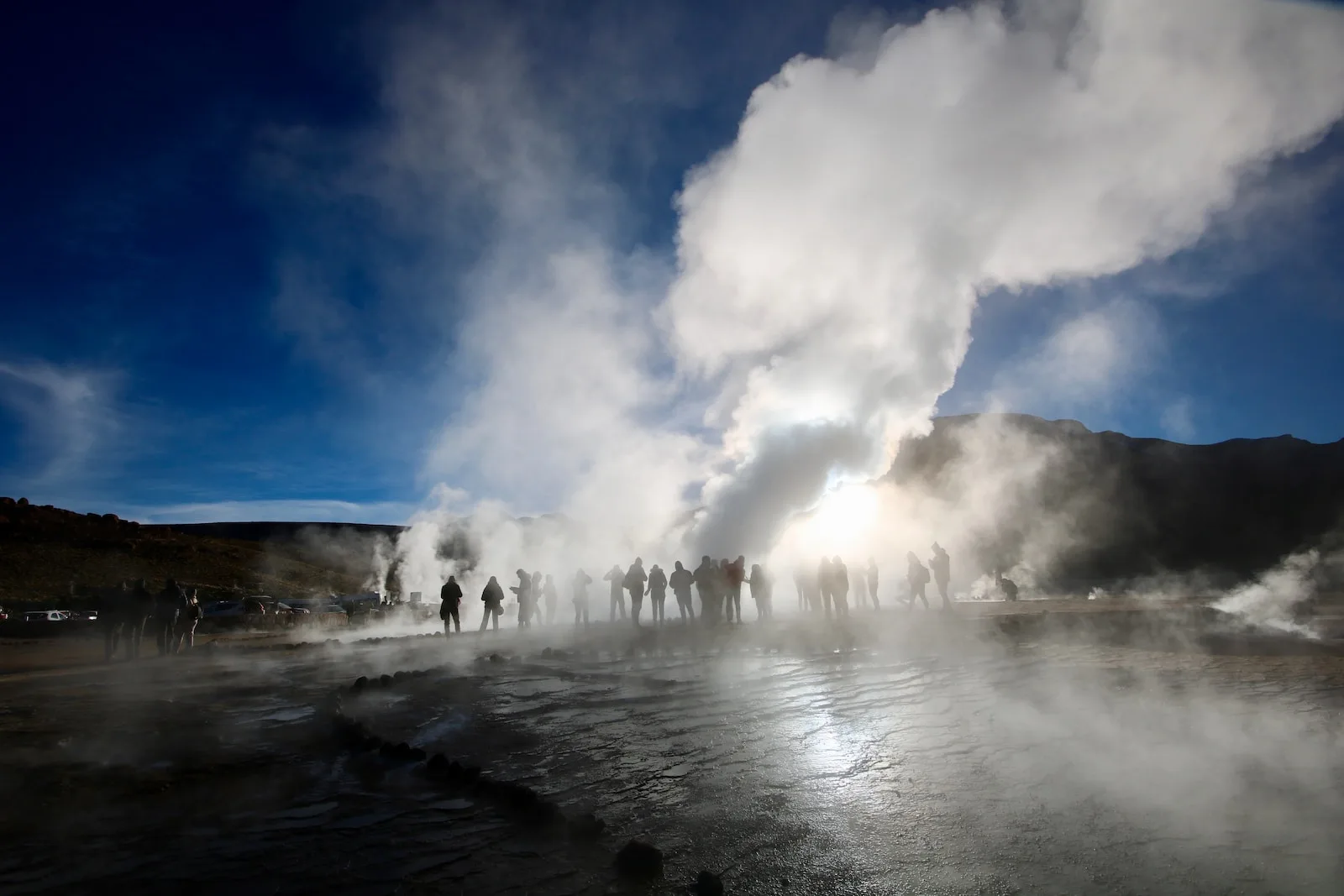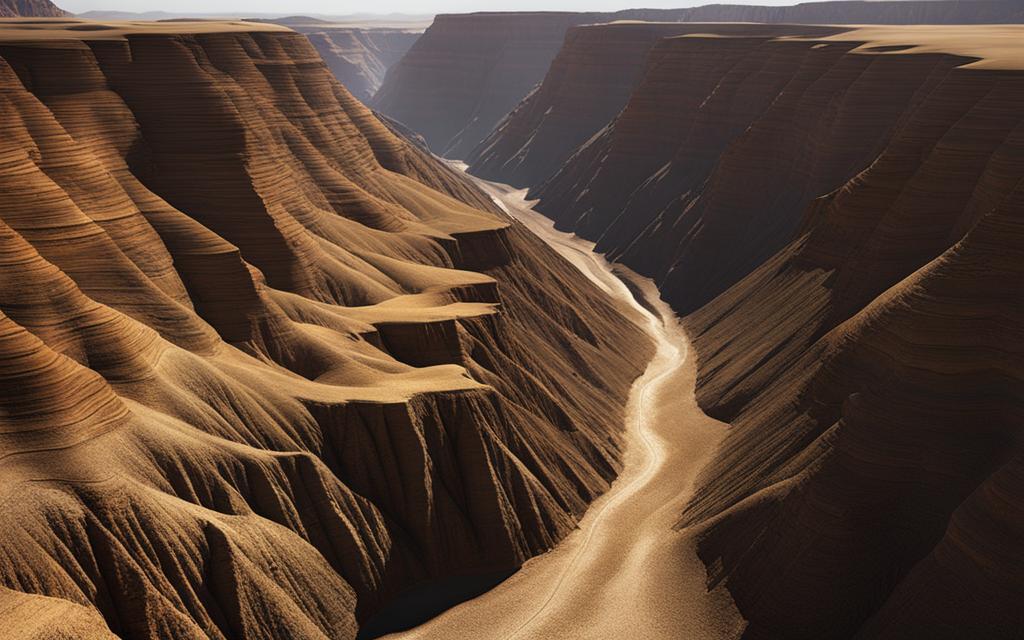Introduction
Welcome, dear readers, to a captivating journey of exploration into the intriguing realms of deltas and estuaries. Picture yourself standing at the edge of a river, where its waters meet the great expanse of an ocean or sea.
What lies before you is not merely a simple confluence; it is a complex tapestry of nature’s craftsmanship. In this article, we will unravel the mysteries and distinctions between these two fascinating geographic features: deltas and estuaries.
Definition of a Delta
Let us begin by demystifying the enigma that is a delta. A delta, my friends, refers to a landform that forms at the mouth of a river when sediment-laden waters flow into stiller bodies such as oceans or lakes. As rivers journey through landscapes, they relentlessly carry along an assortment of sediment – sand, silt, clay – collected from upstream regions.
When these rivers reach their destination and slow down upon entering larger bodies of water, they relinquish their heavy burden. What we are left with is an artistic creation shaped by eons of patience: a delta emerges as these sediments settle and accumulate over time.
These deposits tend to form characteristic fan-shaped landforms that spread out in various directions from the river mouth. Deltas are found across the globe: be it the world-famous Nile Delta in Egypt or the sprawling Mississippi Delta in the United States; each holds its unique charm and allure.
Definition of an Estuary
Now let us steer our gaze towards another enchanting landscape – the estuary. An estuary takes form when rivers mingle with seawater within coastal environments.
It represents nature’s symphony where freshwater currents harmonize with saltwater tides to create an ecosystem teeming with life’s diversity. Imagine standing on one side of an expansive bay as you witness majestic rivers flowing gracefully, carrying with them their share of freshwater.
As these rivers converge with the sea, a remarkable transformation occurs. The characteristics of an estuary include wide-open areas where the river and the sea meet, often displaying a unique interplay between freshwater and saltwater.
This dynamic intermingling gives rise to fluctuating salinity levels that fluctuate throughout the day due to tidal influence. Estuaries present themselves in various forms across the globe, each fusing distinctive environmental elements.
From the iconic Chesapeake Bay in North America to the mesmerizing San Francisco Bay on the western coast of the United States, these regions offer a myriad of experiences for both nature enthusiasts and curious minds alike. Stay with us as we delve deeper into these captivating landscapes, exploring their formation, geographical features, ecosystems rich in biodiversity, human interactions and uses, as well as the environmental challenges they face.
Formation and Location
Delta Formation
Deltas are fascinating landforms that are created through the deposition of sediment carried by rivers. As rivers flow towards the sea, they transport various materials, such as sand, silt, and clay.
When these rivers meet the ocean or another body of water, their velocity decreases significantly. This decrease in speed causes the river to drop its load of sediment, leading to the formation of a delta.
The deposited sediment creates a unique fan-shaped landform at the mouth of the river. Deltas often have numerous distributaries – smaller channels that branch off from the main river channel.
This branching pattern contributes to their distinct appearance and functionality. Some well-known examples of deltas include the Nile Delta in Egypt and the Mississippi Delta in the United States.
Estuary Formation
Estuaries, on the other hand, form through a different process known as mixing of freshwater and saltwater. Estuaries occur where rivers meet with an open body of water like an ocean or sea. The freshwater from rivers mixes with seawater due to tides and currents, creating a unique brackish environment.
This mixing process results in fluctuating salinity levels within estuaries which supports diverse ecosystems adapted to both fresh and saltwater conditions. Two notable examples are Chesapeake Bay on the East Coast of North America and San Francisco Bay on California’s western coast.
Both deltas and estuaries have distinct formation processes that contribute to their diverse characteristics. Understanding these formations helps us appreciate their significance in our natural world.
Geographical Features
Delta Features
When we think of deltas, we often imagine those fascinating fan-shaped landforms that grace the mouths of rivers. These formations, created by the deposition of sediment carried downstream, are one of the defining characteristics of deltas. As rivers approach the ocean or a large body of water, they slow down, causing their load of sediment to settle and accumulate.
Over time, this accumulation results in vast areas of land with an unmistakable triangular shape. Another distinctive feature of deltas is their network of distributaries.
As rivers reach their final stage before meeting the sea, they often split into multiple channels called distributaries. These distributaries branch out like a river’s fingers, carrying water and sediment in different directions and creating a complex maze-like pattern.
This branching pattern not only contributes to the unique appearance but also plays a crucial role in shaping delta ecosystems by distributing freshwater and nutrients across a wider area. Moreover, deltas are renowned for being rich in sediment and nutrients.
The continuous deposition over thousands or millions of years results in fertile soil that supports lush vegetation and sustains diverse ecosystems. This nutrient-rich environment acts as a natural boon for agriculture and provides an ideal habitat for numerous plant species along with various aquatic creatures such as fish and amphibians.
Estuary Features
Unlike deltas with their fan-shaped formations, estuaries boast wide open areas where rivers meet the sea or an oceanic body. They exhibit vast expanses characterized by intricate networks of channels and shallow basins formed through complex geological processes.
These areas provide vital connections between freshwater systems inland and saltwater environments at the coast. One distinguishing feature that sets estuaries apart is their tidal influence.
Tides play an integral role in estuarine dynamics as they cause regular fluctuations in water levels throughout the day due to gravitational interactions between celestial bodies like the moon and sun. This ebb and flow of water creates a unique environment characterized by changing salinity levels.
As tidal currents mix freshwater from rivers with seawater, the resulting fluctuating salinity supports a diverse range of organisms adapted to survive in both conditions. These geographical features contribute significantly to the distinctiveness of deltas and estuaries.
While deltas showcase fan-shaped landforms with multiple distributaries and sediment-rich landscapes, estuaries display wide open areas influenced by tides and characterized by fluctuating salinity levels. Understanding these features allows us to appreciate the ecological significance and functional diversity of these captivating natural habitats.
Ecosystems and Biodiversity
Delta Ecosystems: A Haven for Life’s Abundance
Delta ecosystems are a true marvel of nature, teeming with an incredible diversity of plant and animal life. One of the key features that make deltas so unique is the presence of wetlands, marshes, and swamps. These waterlogged landscapes provide an ideal habitat for countless species to thrive.
The abundance of vegetation in these areas creates a rich food chain that sustains an intricate web of life. Wetlands, with their water-saturated soils, serve as natural filters, purifying water before it reaches the sea.
They are home to various aquatic plants like cattails and bulrushes that play a crucial role in oxygen production and carbon absorption. These environments also support diverse animal life such as amphibians, reptiles, mammals like otters and beavers, and an astonishing array of bird species.
Moreover, deltas serve as important breeding grounds for migratory birds. During their seasonal journeys across continents, birds find refuge in the lush habitats provided by deltas.
These dynamic ecosystems offer sheltered areas where birds can rest and replenish their energy reserves before continuing their arduous journeys. Additionally, deltas act as crucial fish spawning grounds due to the abundance of nutrients carried by rivers’ sedimentation process.
Estuary Ecosystems: Where Mangroves Hold Nature’s Secrets
Estuaries possess their own enchanting ecosystem characterized by vast coastal areas where rivers meet the sea. These coastal zones often feature mangrove forests – a remarkable biome found in tropical regions around the world.
These mangrove forests are adept at braving both salty seawater and freshwater conditions. Mangrove trees have adapted to these challenging environments by developing unique root systems that anchor them firmly into muddy sediments while enabling them to extract oxygen from the air.
The intricate tangle of roots creates a complex habitat that provides shelter for an array of marine organisms. These ecosystems act as nurseries for various fish species, offering protection from predators and providing abundant food sources.
Beyond the mangroves, estuaries support diverse aquatic life. The mixing of freshwater and saltwater creates fluctuating salinity levels, making estuaries an ideal environment for many species to prosper.
They serve as a crucial feeding ground for fish, crustaceans, and shellfish, attracting larger predators like dolphins and seals that rely on this bounty of marine life for sustenance. Both deltas and estuaries harbor invaluable ecosystems with their unique set of attributes.
While deltas boast the lushness of wetlands nourished by fertile sediment, estuaries enchant with their resilient mangrove forests and abundance of marine life. Protecting these remarkable environments is essential not only to preserve their stunning biodiversity but also to ensure the well-being of countless species that depend on them – including us humans whose lives are inextricably linked to these natural wonders.
Human Interactions and Uses
Delta Utilization
A delta’s fertile soil deposits make it a prime location for agricultural activities. The sediment carried by rivers and deposited in deltas creates nutrient-rich farmland, perfect for growing crops.
Farmers take advantage of this natural bounty, planting a variety of crops such as rice, corn, and wheat. Deltas like the Nile Delta in Egypt and the Mississippi Delta in the United States have long been known as agricultural powerhouses, providing sustenance for local communities and contributing to national food supplies.
Moreover, deltas also play a crucial role in hydroelectric power generation. The flow of water from rivers into a delta creates tremendous potential energy that can be harnessed through the construction of dams.
As water rushes through turbines, it generates electricity that can be used to power homes, businesses, and industries. This clean and renewable source of energy is highly valued in many countries with river systems that flow into deltas.
Estuary Utilization
The abundance of marine resources in estuaries makes them ideal locations for thriving fishing industries. Estuaries act as nurseries for various fish species due to their transitional nature where freshwater meets saltwater. The mixing of nutrients from rivers with tidal influences creates an ecosystem rich in plankton—a vital food source for fish larvae.
As a result, estuaries support diverse populations of commercial fish species such as salmon, trout, and shellfish. In addition to fishing, estuaries often become bustling ports facilitating trade between inland regions and the open sea.
Their wide-open areas allow easy access for ships carrying goods or transporting materials between coastlines. Ports located within estuaries help drive economic growth by facilitating international trade and providing employment opportunities to local communities.
Environmental Challenges and Conservation Efforts
Delta Challenges
One of the primary challenges faced by deltas is sediment erosion, which ultimately leads to land loss. Take the Mississippi Delta, for instance. Over the years, excessive sediment deposition upstream from dams and levees has resulted in a reduction of sediment reaching the delta.
As a result, the natural balance of sediment replenishment has been disrupted, leading to substantial erosion along the coastline. This erosion threatens not only the physical structure of the delta but also its rich biodiversity and ecosystems.
Recognizing these challenges, various conservation efforts have been initiated to protect and restore deltas worldwide. In the case of the Mississippi Delta, significant restoration projects aim at diverting river water and sediment to rebuild eroded land areas.
These projects involve strategic diversions that allow freshwater and sediment to flow into critical areas of land loss, stimulating natural processes and promoting habitat restoration. By undertaking such innovative measures, we can work towards mitigating delta challenges and preserving these crucial ecosystems for future generations.
Conclusion
As we delve into exploring what sets a delta apart from an estuary, we unravel fascinating aspects concerning their formation, geology, ecosystems, human interactions, and environmental challenges. Deltas captivate us with their intricate beauty while estuaries intrigue us with their dynamic blending of freshwater and saltwater environments.
While facing environmental challenges like sediment erosion leading to land loss in deltas such as the Mississippi Delta may seem daunting at times, it is important to remain optimistic about our capacity for change. Through concerted conservation efforts aimed at preserving these delicate habitats – be it through diversion strategies or other innovative restoration methods – we can still triumph in safeguarding these extraordinary landscapes.
In understanding what distinguishes deltas from estuaries lies an opportunity for appreciation as well as a call to action to ensure their continued existence. Let us embrace our role as stewards of the environment and work towards preserving these natural wonders for generations to come.
 Skip to main content
Skip to main content


